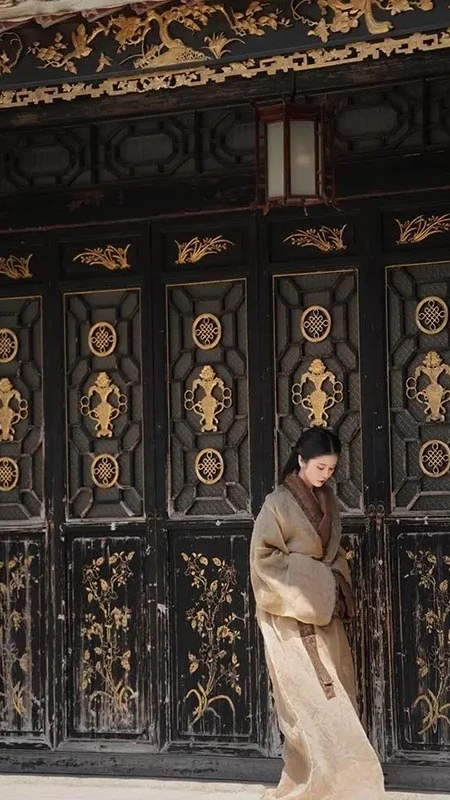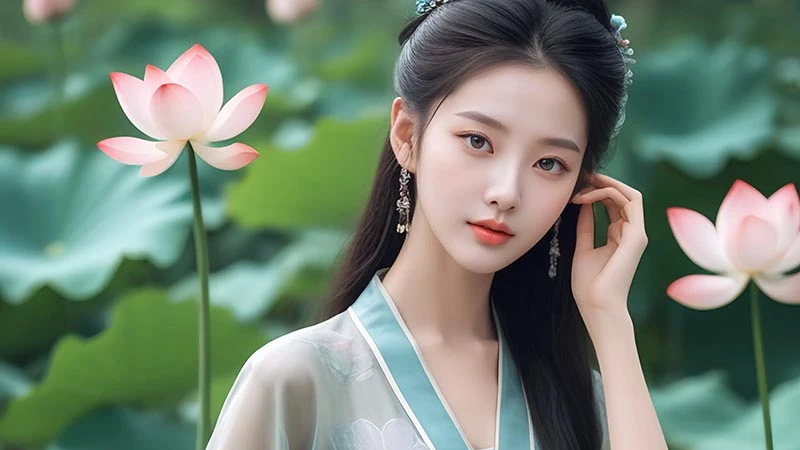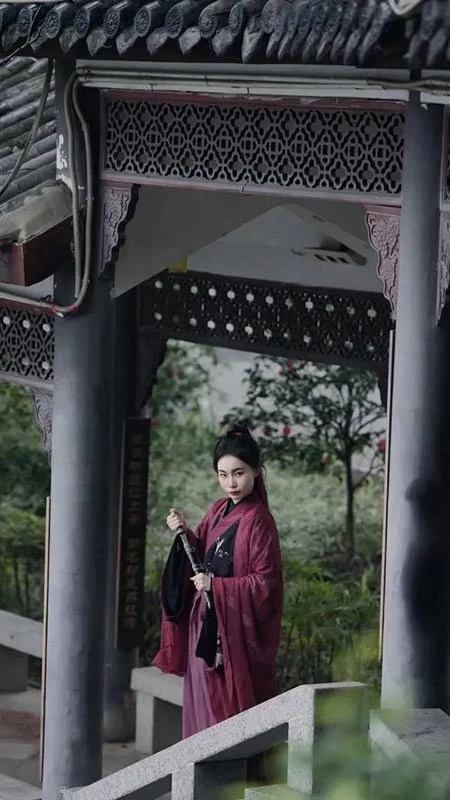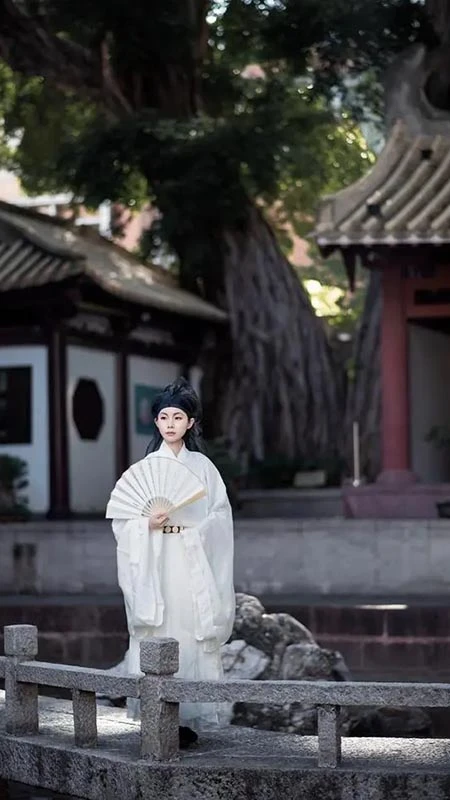In recent years, Guangzhou has become a vibrant canvas for Hanfu culture, with enthusiasts donning traditional Chinese attire on festive streets. These flowing garments, reflecting ancient Chinese aesthetics, are more than just fashion statements—they embody a deep appreciation for cultural heritage. From bustling commercial hubs to serene gardens, Hanfu's resurgence highlights the city’s commitment to celebrating tradition in contemporary ways.

The Rise of the Hanfu Economy
The booming popularity of Hanfu has transformed parts of Guangzhou into cultural hotspots, with businesses catering to this niche. Areas like Yongqingfang (永庆坊) and the cultural zone around the Guangzhou Cultural Center have become home to flourishing Hanfu shops, offering everything from rentals to professional makeup and photography services. For as little as 28 yuan, customers can rent a Hanfu outfit; full makeup and photography packages start at just over 100 yuan.
Shops like those managed by Xiaoxiao (晓晓), a young entrepreneur, stock hundreds of Hanfu pieces—ranging from intricate Tang dynasty robes to elegant Song dynasty styles and stately Ming dynasty attire. "Our collection spans diverse styles and price points," Xiaoxiao explains. "Even though my shop is small, our inventory is worth over 200,000 yuan."
Other areas, such as Dezhen Science and Technology Innovation Park—popularly nicknamed “Datang Hanfu Street” (大塘汉服街)—have capitalized on the trend, creating a one-stop destination for Hanfu lovers. Here, visitors can rent, buy, and even learn about the garments' history, all while enjoying photo-worthy experiences. This cultural boom has also extended to children's Hanfu, with parents eagerly embracing traditional clothing for school events and holiday celebrations, though balancing inventory remains a challenge for some retailers.
Designing Hanfu for the Global Stage
Guangzhou’s unique position as a fashion and cultural hub has also spurred innovation in Hanfu design. Local designers blend historical authenticity with modern flair, creating garments that appeal to diverse audiences. According to Chen Yiran (陈一然), a designer at Ruyifang (襦一坊) Studio, Hanfu design spans two categories: historical reconstruction and modern interpretations. While the former meticulously replicates ancient styles using artifacts and historical records, the latter incorporates contemporary trends, colors, and patterns.
For Chen, creativity and cultural responsibility go hand-in-hand. "We draw inspiration from classical artworks, modern fashion trends, and even global aesthetics," she says. Examples of their innovation include a Hanfu collection inspired by French chateaux and another embracing cyberpunk motifs. "Our goal is to showcase the beauty of Chinese attire and aesthetics to the world, whether through tradition or bold innovation," Chen adds.
A Grassroots Hanfu Movement
What sets Guangzhou’s Hanfu culture apart is its inclusivity and grassroots energy. Educators like Peiyun (沛纭), an English teacher and Hanfu enthusiast, introduce their students to this attire, believing it bridges the gap between tradition and modernity. “By wearing Hanfu to class, I hope to inspire students to embrace our heritage while using English as a tool to share it globally,” she says.
Moreover, local organizations like Hanfu Guangdong actively organize events around traditional festivals, from the Lantern Festival to Mid-Autumn. These gatherings often include performances, storytelling, and workshops, enriching the cultural landscape. One particularly heartwarming initiative involved donating Hanfu outfits to underprivileged children, making traditional attire accessible and meaningful to all.
Guangzhou’s Hanfu movement is a remarkable testament to the city's blend of heritage and innovation. Whether through a bustling shopfront, a designer’s sketchbook, or the joy of a child wearing Hanfu for the first time, the revival of this ancient tradition continues to resonate deeply with residents and visitors alike.
A Future Rooted in Heritage
The popularity of Hanfu in Guangzhou isn’t just a passing trend—it’s a movement with lasting cultural and economic impact. As businesses continue to innovate, designers push creative boundaries, and educators inspire younger generations, Hanfu has firmly established itself as a symbol of pride and cultural revival.
The success of Guangzhou’s Hanfu culture also reflects a broader trend across China: the blending of traditional and modern values. By integrating elements of history into today’s bustling urban environment, Hanfu allows people to reconnect with their roots while embracing the future. Events like Hanfu festivals and charity initiatives further ensure that this cultural renaissance reaches every corner of society.
In Guangzhou, the flowing silks and vibrant colors of Hanfu are more than a nod to the past—they are a celebration of cultural continuity, creativity, and the enduring allure of Chinese aesthetics. With every stitch and stride, Hanfu continues to bridge the gap between history and modernity, inspiring a new generation to carry tradition forward.



